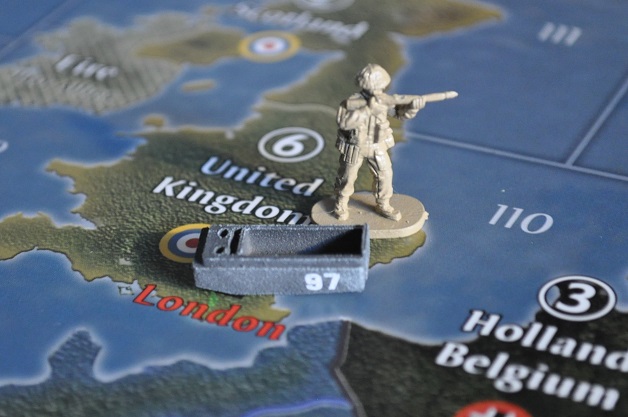This is a neat miniature to have around in the immediate aftermath of great movies like Dunkirk and Darkest Hour, which did heavily focus on the availability (or absence) of proper landing craft.
That said, landing craft fill an extremely niche role in the mechanics of an A&A game. The role of a landing craft is to make your amphibious assaults more effective, and so a landing craft isn’t particularly different from the “marine” unit, which most people find both more familiar and more entertaining. People like marines. Do you really need two different units whose purpose is to make amphibious assaults more effective? I guess if I had a huge unit roster, like 25+ unique units, then I might make room for the landing craft. One nice thing about a landing craft is that, unlike marines, it can presumably be taken as a casualty during a naval battle, serving as a useful distraction that helps you sink enemy warships. In the 1940s, landing craft were generally not equipped for travel on the open seas. They would have been used primarily around the Channel, the North Sea, and perhaps the straits of New Guinea, Indonesia and Singapore – they would not have been shipped all the way across the Atlantic or the Pacific. To represent that, I think landing craft need to have a movement speed of only 1 sea zone.
So, here’s one idea for a pair of house ruled units:
Marines
Cost: 4
Attack: 2
Defense: 2
Move: 1
Each cruiser or battleship can carry 1 Marine. Marines can also be carried on transports or landing crafts as if they were infantry. Marines do not receive bonuses from artillery.
Landing Craft
Cost: 6
Attack: 0
Defense: 1
Move: 1
Each landing craft can carry 1 infantry, artillery, mech. infantry, tank, or marine. During an amphibious assault, you may choose to take one of your landing crafts as a hit in either the sea battle or the land battle. If you take the landing craft as a hit in the sea battle, the landing craft’s cargo is lost. If you take the landing craft as a hit in the land battle, the landing craft’s cargo survives.









